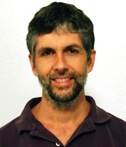Your Whole Heart
If you could see your heart, you would see what fulfills your life.
Here’s a glimpse of What’s Inside You.
By Gil Hedley Illustration by Sam Weber / Republished by permission of GH
Originally published in May~June 2008 / Spirituality&Health.com
I can vividly recall my first encounter with the heart during my early laboratory explorations of the human form. As a budding anatomist, I had many assumptions and preconceptions, and when I finally came face to face with the inner space of the body that I was exploring, I was taken aback. Behind the chest wall I saw the two lungs on either side of a central mass covered in a fibrous membrane — a physical trinity, completely motionless. And in the very place where I felt myself to be most present and alive, in the cadaver I perceived nothing — an empty place.
The stunning miracle of life is often overlooked until the dead are witnessed. And if there’s one thing that separates the dead from the living, it is movement. The heart is at the very core of our life, and in our hearts we are always moving. Give yourself a few moments to feel the truth of that statement. Lying down or seated, breathing without effort, relax and allow yourself to notice the sensations generated from your heart. When you are thoroughly relaxed, you will find that your heart’s motion will actually be visible, gently rocking your whole body with its pleasurable pulsation. Literally 100,000 times a day, our hearts are leaping within us.

The electromagnetic effluence of the heart radiates off our bodies, perfusing the space around us with the signature impressions of our person. The mix of our own and others’ waveforms constitutes the patterns and matrices of our relationships. The particular qualities of those relationships are directly shaped by that which flows from our hearts.
Our Heart’s Patterns
The quality of our heart’s movement deeply reflects our emotional and spiritual patterns. Wherever I am, there too is my heart, perfectly mirroring in its movement my habits, dispositions, and choices. Research has shown that the variability of the heart rate meaningfully reflects heart health.The person whose heart demonstrates the more variable movement, as opposed to extreme regularity, is the healthier one. A heart in a “movement rut,” repeating a pattern of limited dynamism over and over again, is more prone to physically fail. With enough rigid patterning and repetitive conditioning, our hearts will incrementally lose their range of motion.
“Phase space” is a term borrowed from physics, which we use to reference all the space the heart might occupy when moving freely over a period of time.
How much phase space do we allow our hearts?
Is our phase space shrinking?
Have you ever found yourself holding your breath as if bracing against your life?
I know I do this at times. I have also experienced the deep pleasure of my heart. I am regularly bringing forward to my conscious awareness the ways in which I confine the movement of my heart. If we examine our lives, seeking to know the places where we refuse to move, or where we deny our deepest longings, we will know the ways in which we limit the phase space of our hearts.
The Rivers Within
Pour water from a bottle or watch it come out of the tap at the kitchen sink. You will see that the normal tendency is for water to braid itself. Watch a stream. You can witness the same spiraling, vortical movements in the freely flowing water, especially at the cold core of the current. The propensity for water to twist and writhe and fold upon itself, to dissolve or flow with ease past every apparent obstruction, is both the sheer joy of its movement and the bane of canal-building engineers. On our spinning planet, which is itself spiraling rapidly through the galaxy, every attempt to confine and channel the movement of water generates resistance. Water is nature’s child! You must eventually repair the walls of a canal, as the water eventually grinds up and scours away those artificial limits. Maintaining water’s confinement is a constant effort against its essential tendency to flow freely.Our blood is a streaming fluid that shares water’s essential nature. The supple, fractally branching path of the blood vessels — our vasculature — is the arms and legs and head and gut of our whole heart — the ocean and the rivers are one. Anatomical divisions are mental constructs. Like rivers, our blood vessels are flexible streambeds, allowing our blood to spin freely from the center to the periphery and back over 60,000 miles of tributaries. The heart’s shape both facilitates and reflects the movement of our blood. Through a great spiral of muscle fibers and the braiding branches of the aorta and pulmonary trunk, the blood is wrung, revitalizing its movement. The moving center of our heart is like a “crazy straw” for our blood, whose dynamism as well as nutritional chemistry wanes by the end of its long journey. But then it zips back through the heart, braiding and spinning itself once more.
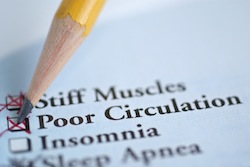
When The Heart Is Tense
With the movement of water still in mind, hypertension is the bodily equivalent of “canalizing” the bloodstream. Stiffening tension in the heart and its branches, a direct result of emotional and behavioral patterns, is like a straitjacket for the blood. What is normally a slightly alkaline internal environment turns more acidic. And just as water attempts to break itself free from the constraints of a canal with its relentless vortical movement, so too does the blood rail against those stiffened vessel walls. Its irrepressible movement and altered chemistry wear away the self-imposed “canals” which would limit its unrestricted flow.Under these altered conditions, we reduce the status of the heart to a mere pump and its once supple and yielding tributaries become mere pipes. We go through the motions of life while pushing through the resistance we ourselves are generating.
Our bodies are astoundingly resilient and respond adroitly to the demands we place upon them. When resistance to our heart’s free movement generates excess friction for the blood, and an acidic internal milieu injures our delicate vasculature, we grow plaques and calcifications, which can better endure the insult. They are our fingers in the dike! Our livers will produce more cholesterol, a mild antioxidant, to address the altered blood chemistry. These symptoms are not the problem. They are an intelligent and automatic response to their circumstances, for which we can be grateful. They indicate underlying issues, which are well within our immediate power to improve.
Living Wholeheartedly
Our bodies are gifts to be used, and ultimately to be used up. There is neither fault nor harm in winding down the party and heading home! There’s only a problem if we show up at the party but refuse to dance; if that’s the case, we may want to reevaluate our choices, stretch our hearts, and take life for a spin. We can take our cue from the whirling dervishes. Stretching their arms and arching their backs, they intentionally open, turning and letting go of themselves in a manner that accelerates the spinning potency of their hearts: as above, so below. Or as the old Shaker song has it, “By turning, turning, we come down right!”Remember the story of King David, who danced, naked and joyful, in the procession leading the Ark of the Covenant, the sacred container holding the Ten Commandments, up to the newly built temple. Within the Ark lay the direct communication between the people and their Source. The Ark would come to rest within the inner sanctum of the completed temple, the Holy of Holies. The ecstatic dance and the resting point in this story are complementary aspects of the same divine movement.

Stripped of all encumbrances, like King David, we are overcome with joyful movement.
---------------------------
Gil Hedley, Ph.D., offers intensive dissection courses internationally, and is the producer of The Integral Anatomy Series on DVD, which documents his distinctive approach to the human form in the laboratory. He is the author of Reconceiving My Body, and continues to work on other writing projects exploring themes of spirituality and the body. Visit him at gilhedley.com.
How I Fell In Love With Fat
Illustration by Richard Wilkinson
WhyAreWeWhispering.com
The Essence of Fat
Through the lens of this anatomy teacher and doctor of theological ethics, fat is a mantel of sensitivity and sensuality. Maybe it’s time we all took a look through this lens.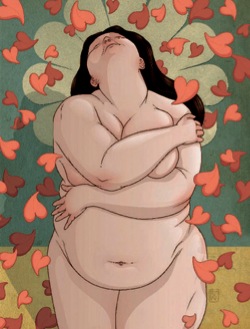
a glorious, shapely yellow fleece . . .
something elemental, an essential aspect of our bodily life previously under-appreciated.
I know we live in a fat-obsessed culture. We all know it. Hollywood and the fashion industry are emaciated. Tabloids portray weight gain as the mark of fallen stardom and the ultimate disgrace of our female show biz icons, who then rise again through heroic dieting victories to become the poster children for weight-loss franchises. Phrases such as “low fat,” “no fat,” “fat-free,” and “zero calories” are associated with virtuous eating and moral goodness, while Americans, per capita, are slugging down gallons of diet soft drinks and pounds of hydrogenated-fat-laden processed foods.
We are a nation standing in front of a funhouse mirror, but nobody’s laughing. Our body images are so distorted that some sort of meaningful, transformative intervention is in order.
So what qualifies a skinny middle-aged guy to speak for the rehabilitation of our relationship with fat? Hard-won experience. I am someone who, through great personal effort, went from “fat-phobic” to “fat-philic?” First I feared it; now I appreciate it. Though my Ph.D. is in theological ethics, I have spent the last dozen or so years teaching human anatomy workshops in cadaver laboratories across the U .S. and abroad.
 When I began studying human anatomy in the dissection laboratory, I had an inkling that there might be greater merit to the fatty layer of fascia just beneath our skin than was commonly attributed to it. That’s because in addition to my academic studies, I also was certified in massage therapy and Rolfing®?. Rolfers have a keen interest in the body’s amazing layers of connective tissue, which wrap, relate, and interpenetrate all of the other tissues of our human form. I followed that interest straight into the dissection laboratory so I could see for myself what I was feeling in my body and in the bodies of my clients.
When I began studying human anatomy in the dissection laboratory, I had an inkling that there might be greater merit to the fatty layer of fascia just beneath our skin than was commonly attributed to it. That’s because in addition to my academic studies, I also was certified in massage therapy and Rolfing®?. Rolfers have a keen interest in the body’s amazing layers of connective tissue, which wrap, relate, and interpenetrate all of the other tissues of our human form. I followed that interest straight into the dissection laboratory so I could see for myself what I was feeling in my body and in the bodies of my clients.Seeing the Layers
When medical students dissect during their first year of schooling, scant attention is devoted to understanding the inherent complexity of superficial fascia, the first loose connective tissue just beneath the skin, commonly known as the adipose… or fat. Students are instructed to find various nerves, vessels, and muscles by dissecting their cadavers region by region. This is a bit of a treasure hunt because fatty deposition is always present between skin and the deep fibrous fascia surrounding the muscle tissue. So students must repeatedly remove sections of these superficial tissues from each area of the body, but they never actually see the adipose layer altogether.Time is at a premium and this tissue obscures what they are required to know for their exams. The students may actually get a bit impatient and even annoyed with the adipose after a while. Med students, like most of us, are pre-conditioned with all sorts of judgments about fat, and there it is, again and again, blocking their progress to the muscles, nerves, and blood vessels. And the curriculum places no demand upon them to understand it comprehensively.
When I first encountered the fat-bearing superficial fascia of the cadaver, I found it rather disturbing. It turns out that’s because I was disturbing it! Although I knew from my bodywork trainings that this structure beneath our skin was an integral fabric, continuous from head to toe, I followed the standard manuals and dissected it region by region, just like the medical students. Lacking any finesse with my hands or scalpel, I obliterated the delicate structuring web of connective tissue in which those golden lipid cells are suspended. You can no more understand the fat layer by dissecting it this way than you can understand the nature of butterflies by ripping them to pieces. The parts will never, ever convey a sense of the whole. It was so profoundly disturbing to me to break up the adipose layer this way that I had nightmares, and the prospect of returning to the lab filled me with deep dread.
Who’s on the Table?
When you go into the human form, it’s as if you’re standing before the whole universe, and it’s a mirror that reflects your own whole self as you’ve never before seen it. As you delve into a human body, you find not only what was in that person’s form but what lives within your own form. It’s a chance to drop down through the layers, to see each and every vibration of your own self. Some of it you’ll love, and some of it you’ll hate, but hopefully, you will begin to develop a more mature relationship with your whole self.This isn’t always your intention, as a medical student or a surgeon, when you do whole body dissection. Nevertheless, it’s what happens - it can’t help but happen, because it’s you there on the table.
It’s an experience of being touched - every time you touch, you are touched.
I had an inkling that there might be greater merit to the fatty layer of fascia just beneath our skin than was commonly attributed to it.
I came to believe that the regional dissection method sometimes does more to hide than to reveal the integral nature of who we all are, so when I began to teach, I tossed aside my dissection manuals with their regional approaches and their quest for discrete “parts.” In order to give my students an experience of an integrated body - the whole body - I decided that we would dissect the whole body simultaneously, one layer at a time.
What we beheld was a rare vision of beauty: the entire superficial fascia of the human form as a unity - a glorious, shapely yellow fleece. It was obvious that we were looking at something elemental, an essential aspect of our bodily life previously underappreciated and overlooked. My own “fat obsession” took on an
entirely new character: What were the powers and importance of this tissue? I became obsessed with knowing the answers.
Appreciation Leads to Acceptance
I couldn’t find a picture in any anatomy book that portrayed what we were looking at, yet the adipose layer is one of the most basic shaping elements of every human body, and particularly of a woman’s body. We had such a different experience of this rare vision because we wanted to look at the adipose and observe its integrity. We chose to stay with the layer. We wanted to appreciate it, rather than get past something normally considered onerous, and we committed the time and energy to do so.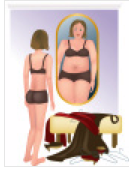
Appreciation is a prerequisite for acceptance and real understanding. When we judge and compartmentalize instead of looking for what there is to appreciate in something or someone, neither acceptance nor meaningful change of outlook are likely to follow.
My change of outlook did not happen instantly, and it is a result of one thing: My fascination and drive to understand has always just outpaced my fears and dread. It took years of handling and exploring the tissue in all of its fascinating variability and complexity to come to the place of respect and appreciation I hold for it now. It took repeatedly facing and releasing layer upon layer of my own judgments and discomfort to find relief from my cultural predispositions and distorted emotions regarding adipose.
I now believe that the layer of fat just beneath the skin is not some sort of inert baggage dragged about by the ‘living’ part of our body. It’s alive, too, just like the rest of us! It’s not a demon to be driven out; it belongs there. The fat layer is a form of human expression, and it has a lot to say. So just as the hand cannot
say to the foot, “I don’t need you,” likewise the head cannot say to the fat, “Be gone!”

The Energy of Adipose
The specific vibrational quality of each layer of the body - whether adipose or skin, muscle or bone - contributes essentially to the harmony comprising an integrated, embodied person. In the same way that your eyes and ears and nose interpret particular frequencies of vibration, the varying composition of your skin, adipose, deep fascia, muscle, membranes, organs, bones, and nerves both emit and absorb frequencies in a manner characteristic of their particular structure.I have had the privilege of observing many groups of professionals working intently to dissect a given layer. When they do, there is a distinct quality to the experience generated by the different tissues. Before I had much consciousness of the powerful charge carried by the adipose layer, we would remove it mainly
by hand. The sometimes loose interface between the superficial and deep fascia allows for this type of blunt dissection, but it’s at the cost of invariably breaking it up. So after observing and appreciating the continuity and integrity of the adipose over the whole body, we would basically tear it apart to reveal the deep fascia beneath. Opening Pandora’s box should be preferred to this technique!
When the tearing of the adipose began, some in the group would become possessed with the mission to see the job through, while others would be reeling from the pace, or need to cry, or even sense pain in their own adipose. After one of these experiences, a distraught student approached me accusingly, saying, “You created this madness by the way you told us to do this!” I replied with what I’d believed until that moment: “The adipose just seems to bring all this out in folks! Breaking it up this way carries an inherent emotional charge, and that charge is different for different people.” Obviously dissatisfied with my reply, she left me standing there to ponder her comments.
Over time, the truth that she’d spoken deeply transformed my own! I realized that because the process did, in fact, have this observable impact, I needed to be a hundred times more considerate than I had been. I needed to take a slower, gentler approach with the dissection process for the sake of all involved.
Now when I dissect this tissue with a group, we not only observe its integrity while it’s on the body, but we also try to demonstrate that same integrity as it’s coming off. If we can, we remove the adipose as the continuous fabric that it is. Rather than provoking a frenzy, the process now fills us with amazement and awe. And there is no aftermath of nightmares. People in the class who are more filled out in their adipose layer gain conviction of the physical beauty inherent in their own form, just as they are. They become better connected to the positive aspects of their particular endowment.
A Different Kind of Sense Organ
The living adipose is basically liquid energy and raw power suspended in a web of piezoelectrically conductive collagen fibers. Through it are transmitted fields of information from our external environment to the depths of our bodies at all times. The adipose layer is replete with specialized smooth muscle cells, whereby the tissue tone is maintained and adjusted. It is as if our soft coating of fat is a living antenna of the most sensitive kind, receiving from without and broadcasting within the waves of information that surround us.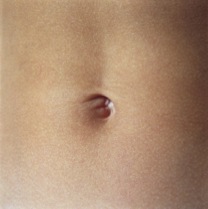
Likewise, a pregnant woman’s adipose layer grows not only as a resource to support and nourish her baby but also to heighten her sensitivity to the baby’s coos and cries and to any potential dangers in their environment. She grows her inner pillow to comfort her child and also to resonate more perfectly with her baby’s body, the lines of whose form are a delicious portrait of the fat beneath its skin. Babies and mommas feel everything! Left to their own devices, they are incredibly attuned. Their tissues share a common frequency, like two tuning forks of different octaves, momma fat and baby fat, singing lullabies in perfect resonance.
When we diminish fat, we diminish all that. When we place it in the bucket uninspected, when we discard a 30 to 40+ pound organ without a thought as to its potential power and role in our lives, we overlook and miss out on something big! We undercut a feminine aspect and a childlike capacity present in us all. We leave a gift unwrapped. I pray that we all might shine some light on that gift, to more fully witness and embrace our whole selves.
The Future of Fat
I do not pretend to know all of the properties and potencies of the adipose layer of the human body; I would like to, though! Short of a lot more research, we are left to rank speculation. The issues that surround fat in our culture involve our health, politics, the balance of power, economics, class, race, gender, discrimination, and more. By studying the adipose layer as a gift rather than a curse, a different set of questions can emerge beyond “Am I thin enough?” “How can I lose 10 pounds?” “How can I control my weight?” and “How fat is too fat?”From a place of appreciation, we can ask and explore exactly what the adipose layer is, free from shame and angst. We can be thrilled by the inherent powers of our bodies, blessed by the gifts that we all share in common, and excited to tap into the full potential of our whole and integrated selves. We really can lighten up a bit around fat!
Gil Hedley, Ph.D., teaches his intensive dissection curriculum internationally, and is the producer of The Integral Anatomy Series on DVD, which documents his distinctive approach to the human form in the laboratory. He has written numerous articles as well as a book, Reconceiving My Body, and his current book-in-progress is entitled Integral Anatomy. Gil continues to work on other writing projects exploring themes of spirituality and the body.
Visit him at gilhedley.com.
Resources:
GilHedley.com for still lab images and free audios to help you appreciate the adipose through guided meditation
cosm.org - Alex Grey’s Chapel of Sacred Mirrors, visionary anatomic art
abcgallery.com - classic art capturing the beauty of women’s forms
Republished with permission of Gil Hedley. Originally published in SpiritualityHealth.com / November~December 2007
Opening Your HEART
WhyAreWeWhispering.com
Sometimes our hearts ache, filled with grief or bitterness or loneliness.
To avoid these feelings, we often close our hearts, and may gradually forget what an open heart feels like. Reopening then can be a delicate operation, yet access to the sensations of the heart are available to every one of us, at a pace perfectly reflecting where we are right now. That access is our pulse.
STEP ONE / Sitting comfortably, take a few slow, easy breaths on purpose and choose to focus on the physical sensations of your heart. Place your right wrist, facing upright, into the palm of your opened left hand. Let your left fingers gently curl around the right wrist, so that your left finger-pads settle and lightly press at the thumb-side groove between the tendons and the small bony prominence of the right wrist.
Pause.
Notice the sensation of rhythmic throbbing beneath your finger-pads. Just sit with that, appreciating the movement of your heart at your wrist. It’s quite the miracle, right there at your wrist.
STEP TWO / Raise the left-hand finger-pads ever so gently up to the groove at the right side of your neck, just between the bulk of muscle at the side of your neck and the central structures of your throat. Avoid pressing, as the movement of the heart here is full, and close to the surface. Breathe slowly and comfortably while you feel the sensations of your heart reiterating through your neck: your heart really is a whole-body phenomenon.
After half a minute or so, return to feeling the wrist pulse, and notice that you may continue to feel the rhythm in your neck simultaneously.
STEP THREE / Gently lie on your back comfortably on a couch, bed, or floor. Breathe easily while reveling in the fact that allowing a few nice relaxed breaths is a genuine gift to yourself, which you absolutely deserve. Rest your hands over the center of your belly, just beneath the rib-margin. Spend at least a minute or two just resting like this. Having already accessed the finer movements of the heart whispering through your wrist and neck, you may find it easy to sense the grander flourishing of your heart’s movements in your belly, stirring beneath your hands, in your chest, and even deep in your back along the front of your spine. Just let it do its thing, and notice the variety of sensations that accompany the movement of your heart.
After repeating the steps of this practice over the course of a few days, you will soon find it easy to allow the motion of blood spinning through your heart to rock your whole body. It’s fun and relaxing, and brings you into a pleasant connection with yourself.

